U prilogu koji slijedi, navedeni su „predmet i prvobitno obrazloženje“ teme koji su predstavljeni 6. aprila 2023. U međuvremenu je sadržaj detaljnije razrađen.
„Mladi i avangardni umjetnici su važan element kulturne scene u svakoj metropoli. Nebrojene izložbe, galerije, muzejske postavke, i manifestacije, pravi su magnet za stvaraoce, jer nude dosta mogućnosti za kreativni izraz. Ipak, život u svjetskim metropolama podrazumijeva i „ozbiljnu konkurenciju“, rijetke prilike za samostalna izlaganja, visoke cijene zakupa stambenog i galerijskog prostora, a nerijetko i teške uslove života. Toga su mnogi umjetnici svjesni, ali ipak biraju život u metropoli. Moja želja da upoznam svijet postojala je čini mi se oduvjek.
Život u inostranstvu mi je ispunjenje takve želje donekle olakšao. Studirao sam i radio u različitim metropolama od Amsterdama, Pariza, Berlina i Beča do Njujorka i Meksiko Sitija. Upoznao sam sjaj i bijedu ovih gradova i počeo da razmišljam o selidbi u neko „manje privlačno“ mjesto. Pitao sam se da li bi se tim potezom smanjio kvalitet mog umjetničkog rada? Da li bih tako ostao izolovan od svijeta umjetnosti? Izgubio kontakte? Ipak, donio sam odluku da se preselim u Bijeljinu, što sam i učinio 2016. godine. Pokazalo se da taj životni potez nije omeo moj umjetnički rad. Naprotiv. Oslobođen pritiska koji nose veliki gradovi, osjetio sam novu slobodu i još veći stvaralački impuls.
Odlučio sam da za svoje projekte ubuduće biram manja mjesta. Broj žitelja u malim mjestima se smanjuje, dobrim dijelom i zbog migracija stanovništva u veće gradove. Ono što manja mjesta na prvi pogled čini neprivlačnim, za mene je bilo izuzetno privlačno, a to je broj praznih objekata. Primjera radi, u gradovima istočne Njemačke kao što su Gerlic (Görlitz) i Cajc (Zeitz), ili kao što su Kozarska Dubica, Orašje, Bihać ili Foča, skoro polovina lokala, stovarišta i fabrika stoji neiskorištena.
U svojim master studijama, želio bih istražiti prazne prostore u Sarajevu, u njegovom centru, u predgrađu, ali i u okolnim selima. Ove prostore pokušao bih iskoristiti na nov način: kao mjesta za izložbe ili pop-up hepeninge. U planu je i izrada svojevrsne mape potencijalnih lokacija za kreativni sadržaj. Ukoliko se taj plan uspješno bude realizovao, ova mapa bi mogla biti od koristi i drugim umjetnicima, što bi potpomoglo stvaranje nove klime za umjetničke sadržaje u dužem trajanju. Ovaj projekat bi bio moj pokušaj da kroz mogućnosti koje imam kao dizajner, prikažem napuštene objekte iz drugačijeg i zanimljivijeg ugla, i kao takve ih približim dolazećim generacijama umjetnika, ma odakle da su.“
Sarajevo, 6. april 2023.
Škola kujundžijskog zanata u bistriku
U Sarajevu, kao i u mnogim drugim gradovima na Balkanu, postojala je bogata tradicija kujundžijskog zanata. Sarajevo je kroz svoju istoriju imalo raznovrsne zanatske radionice koje su se bavile izradom metalnih proizvoda. Ovi proizvodi često su bili dio svakodnevnog života ljudi, ali su takođe imali i estetsku vrijednost. Međutim, s vremenom su se promjenile tehnologije i potrebe društva, što je uticalo na smanjenje potražnje za tradicionalnim ručno izrađenim metalnim proizvodima. Iako je taj zanat i dalje prisutan, može biti izazovan održavati ga u savremenom kontekstu. Danas učenje više služi kao hobi nego kao stvarna korist.
Škola kujundžijskog zanata koju sam bohađao početkom 2023. godine, je trajala nešto više od dva mjeseca. Ovo obrazovanje je svakako bilo veoma poučno, ali je bilo usmjereno ka tradiciji i klasičnim motivima. No, bilo bi mi jako zanimljivo ako bih mogao da uključim ovo naučeno zanatsko umjeće u ponudu svoje pop-up prodavnice, kroz savremene i moderne pristupe. Uskoro više o tome.
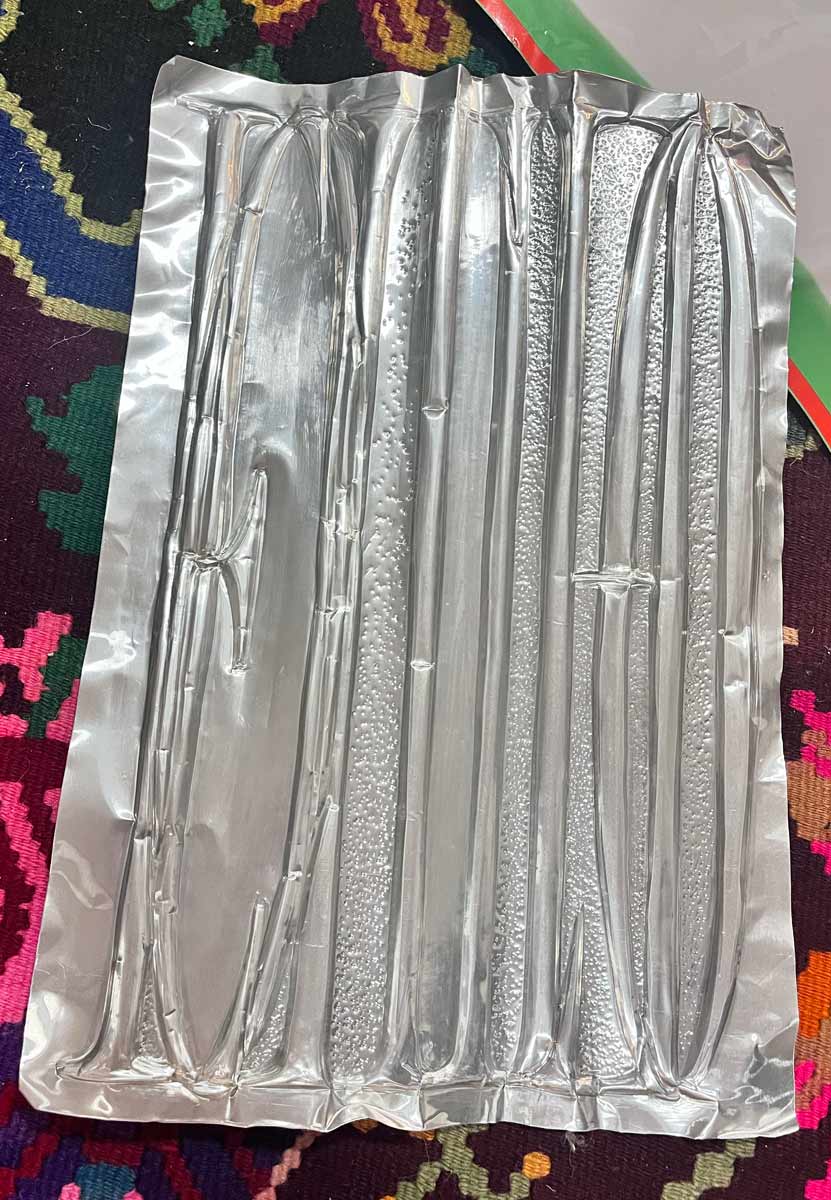
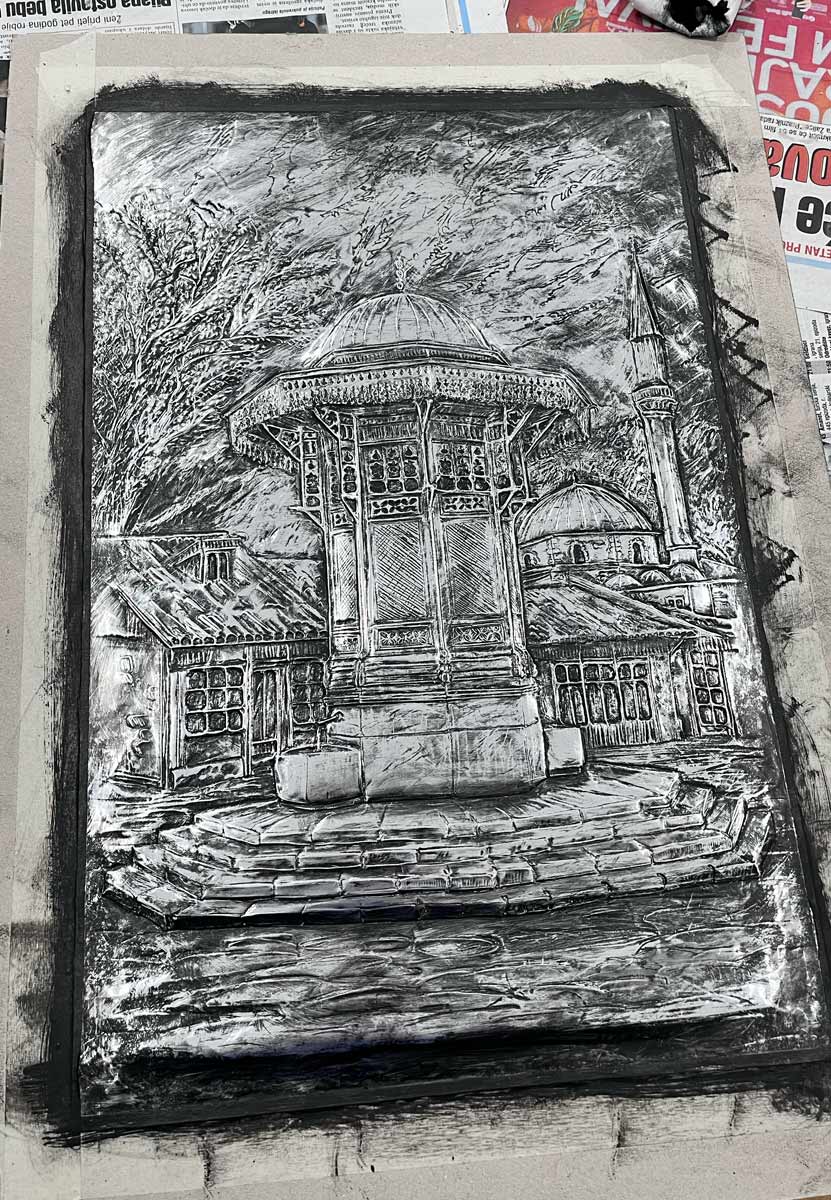
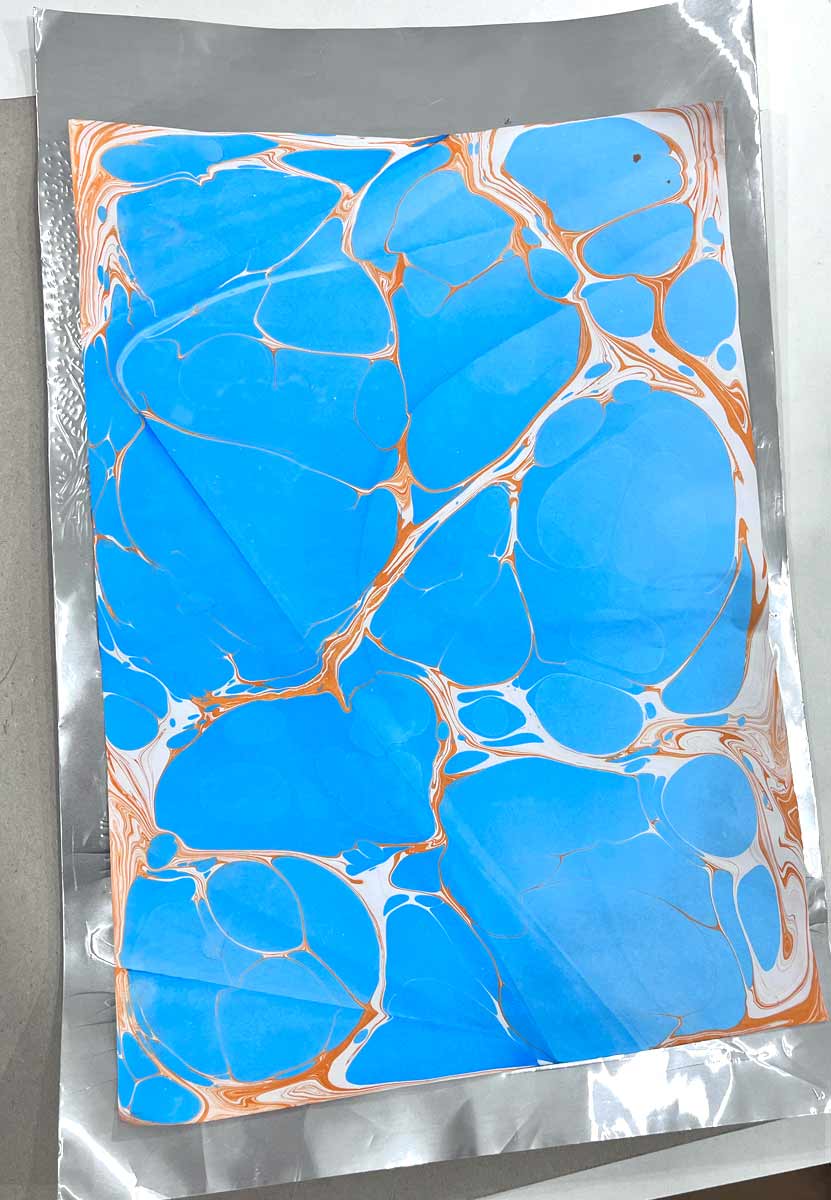
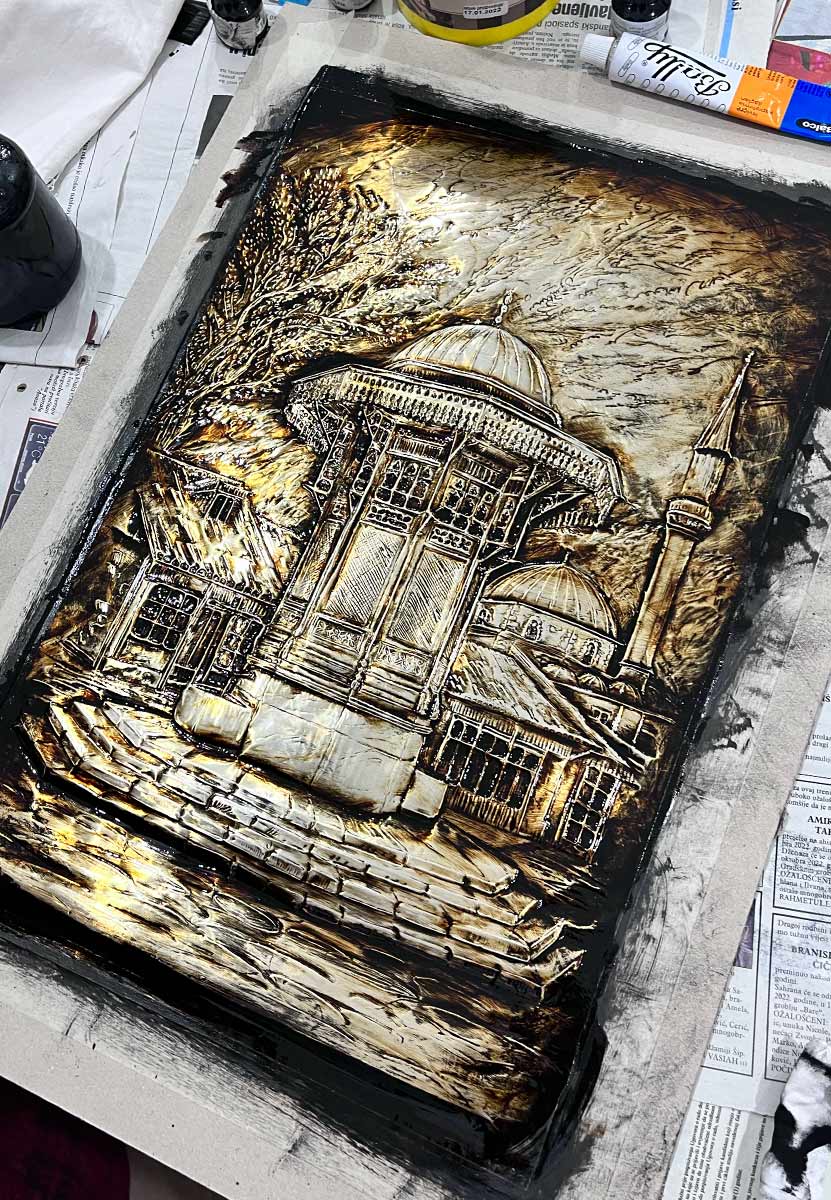
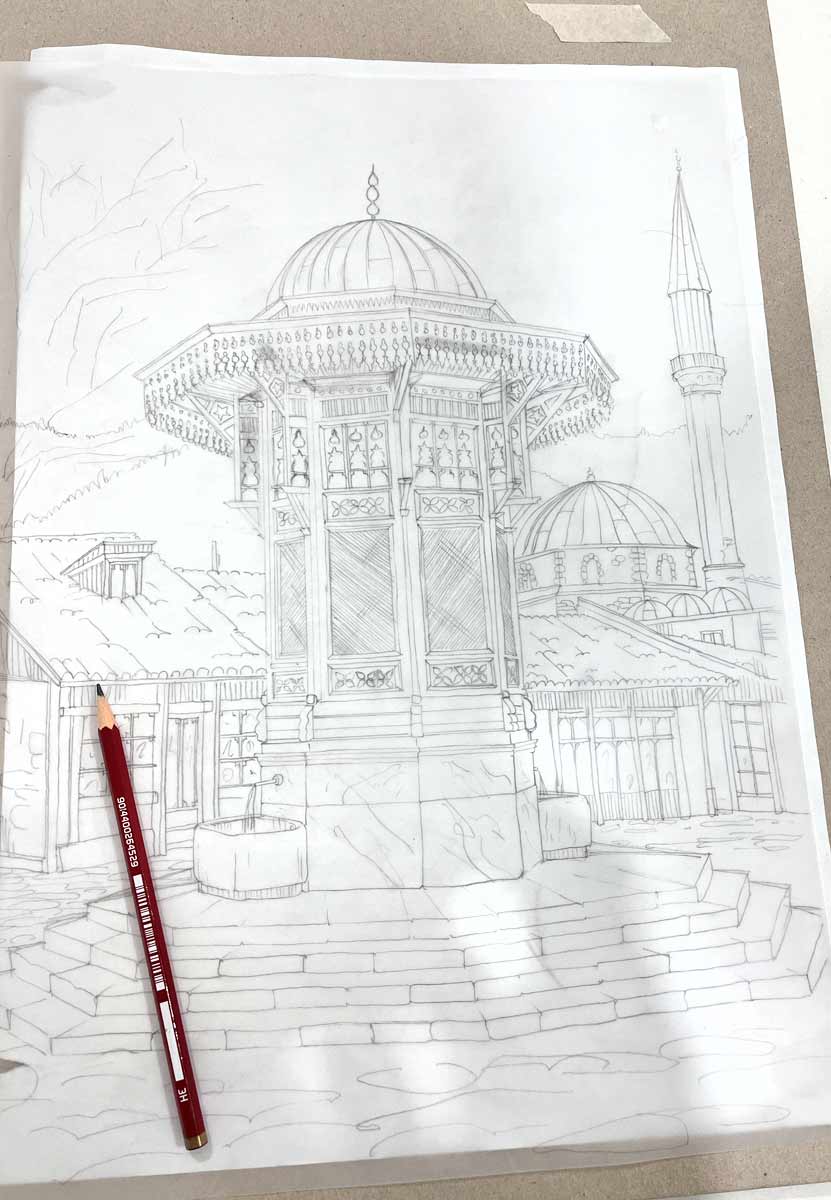
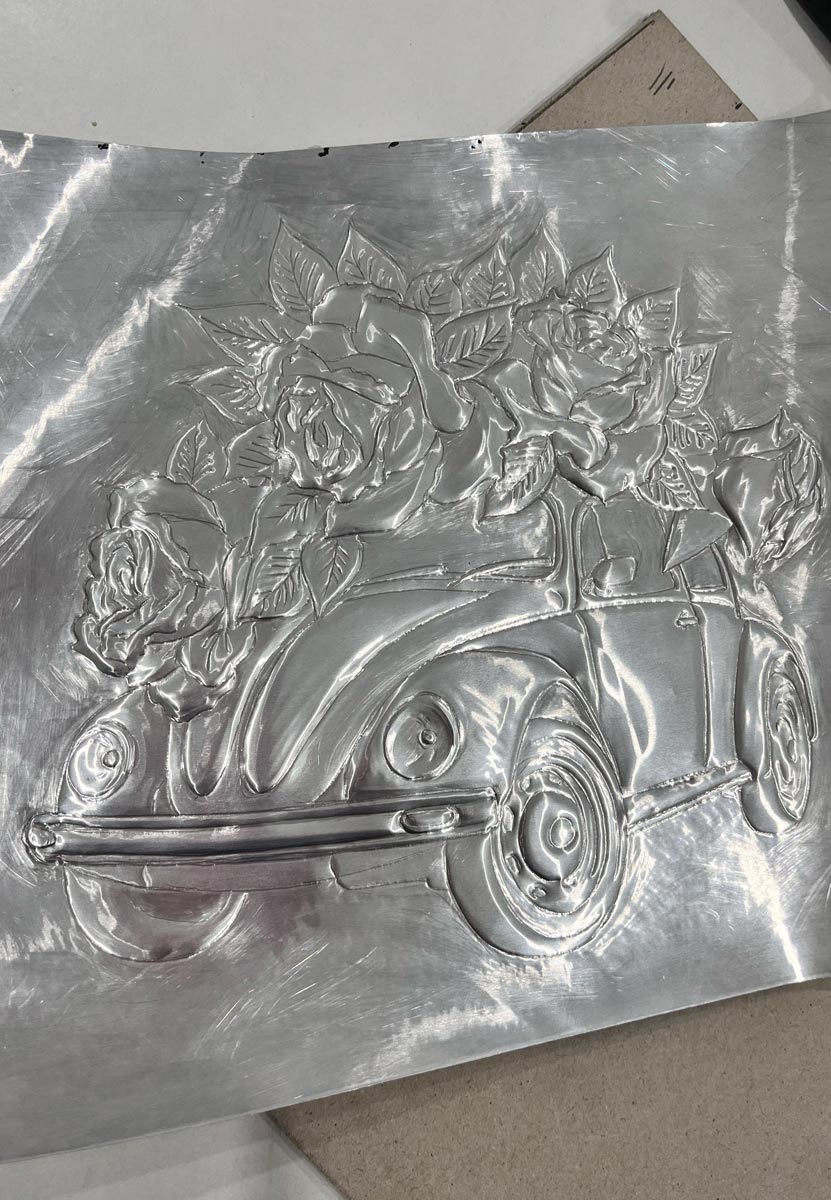
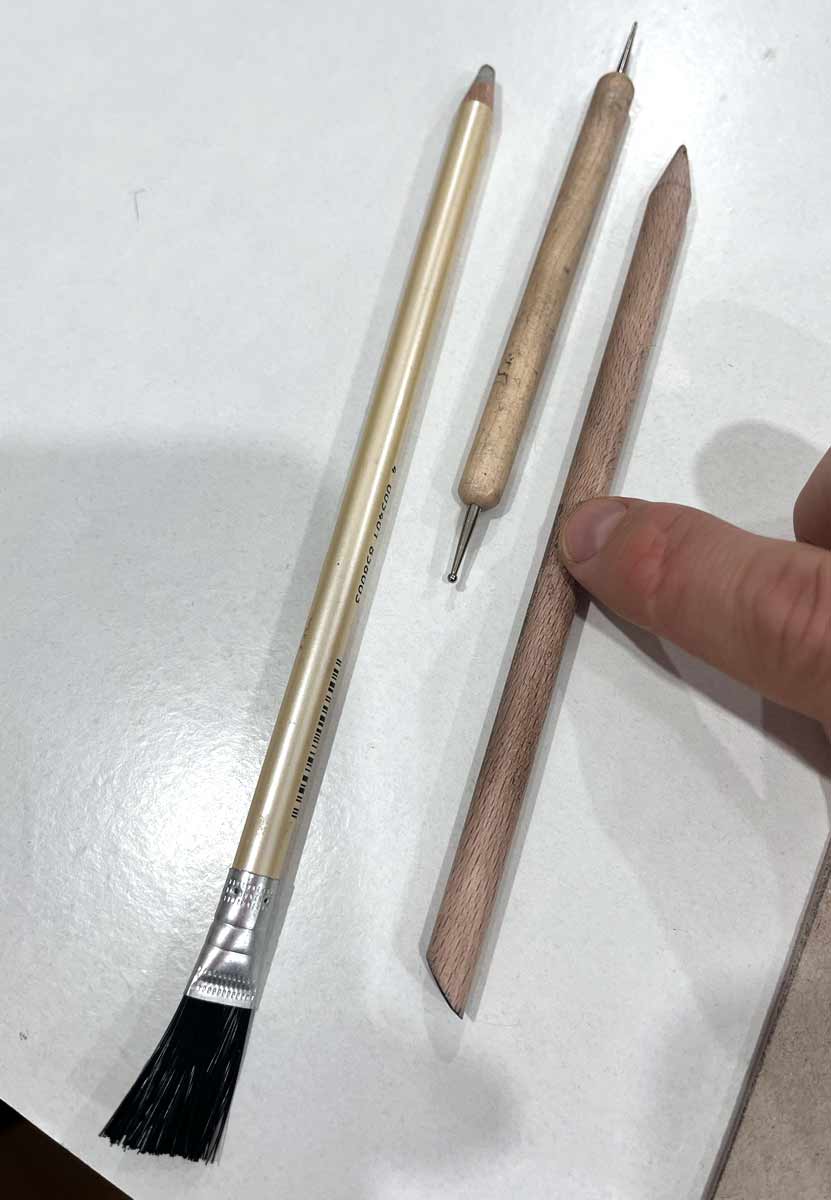
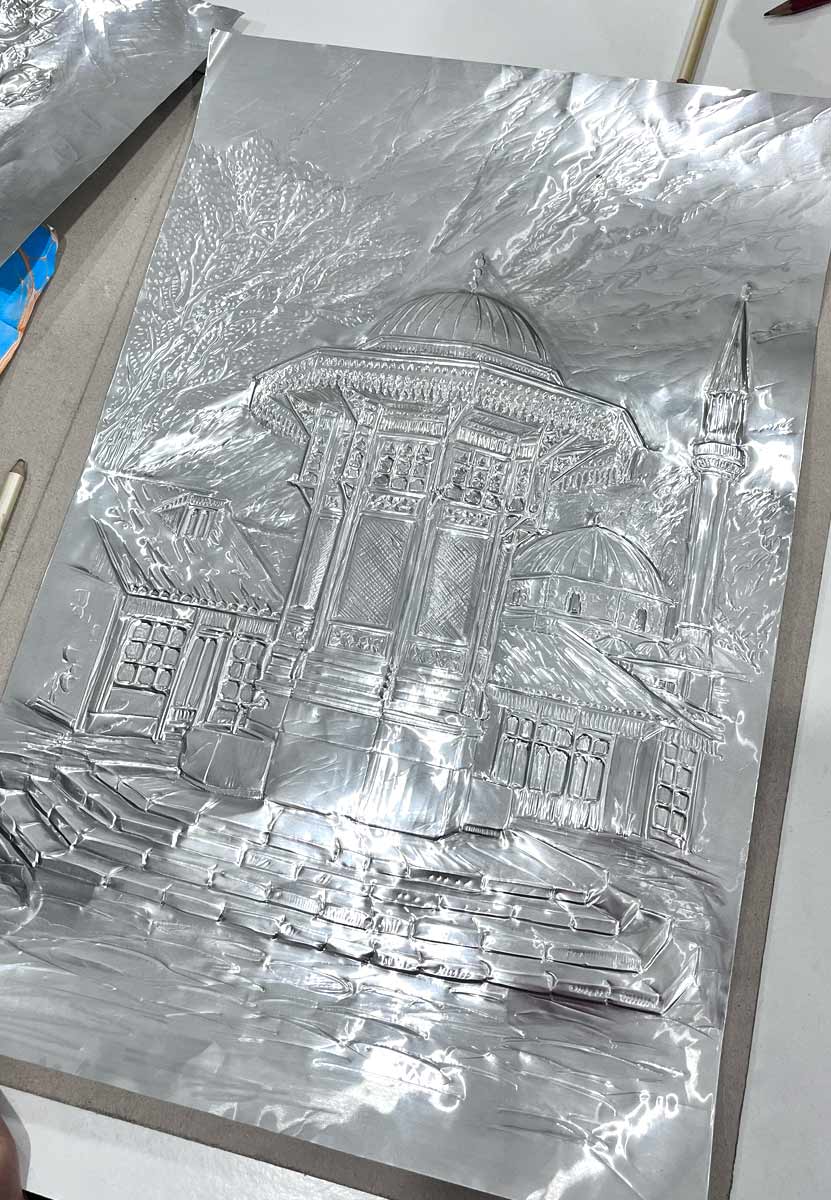
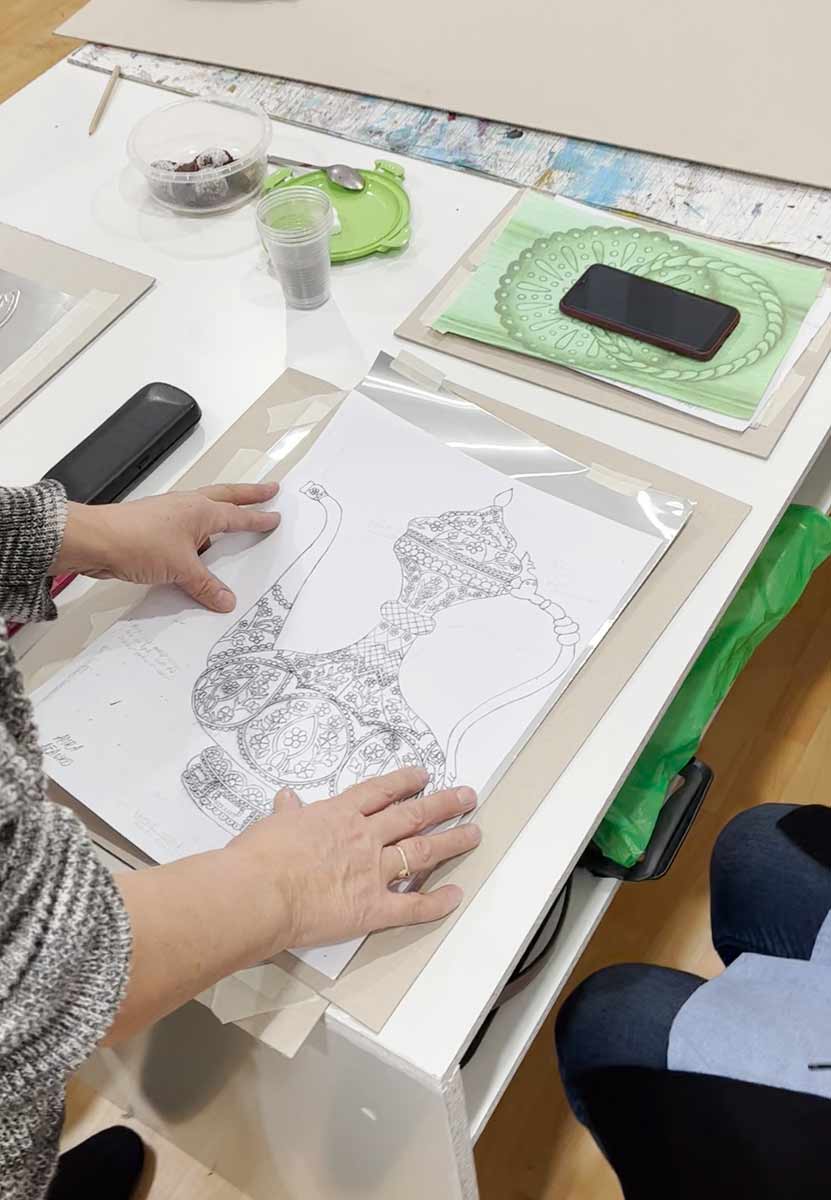
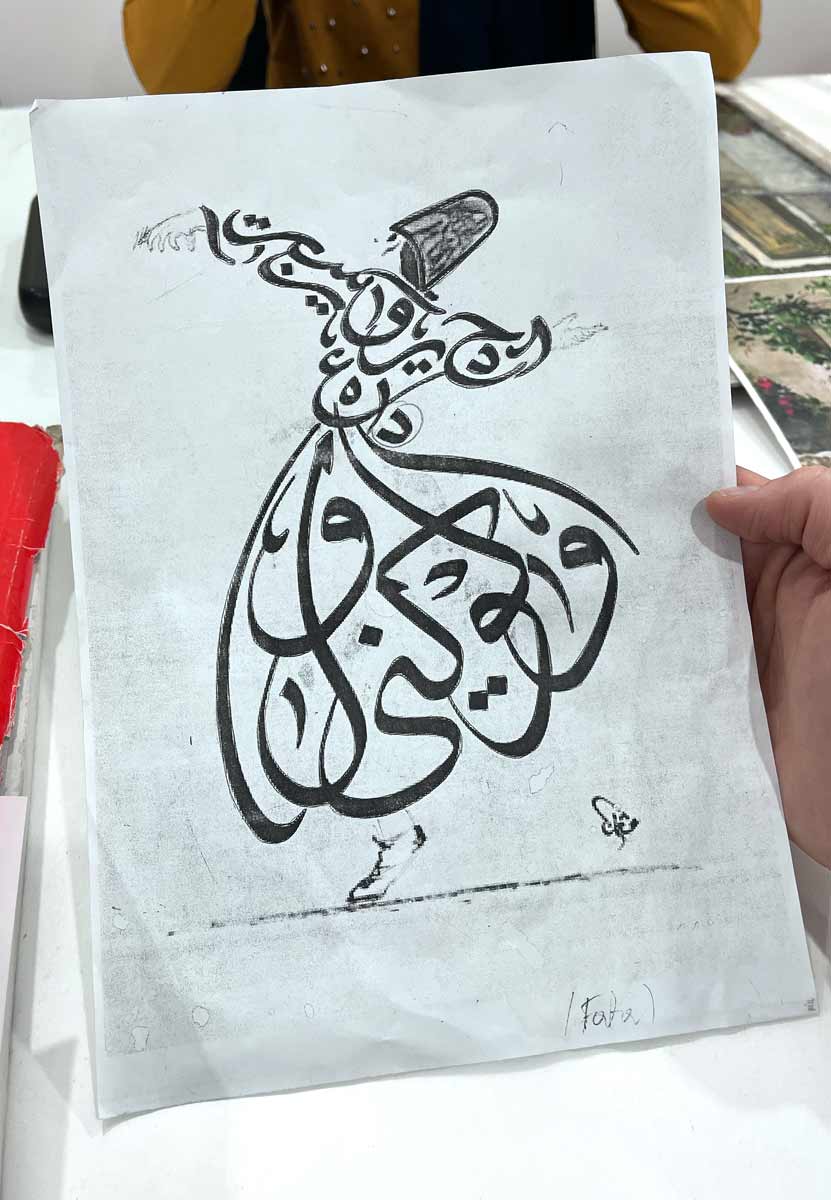
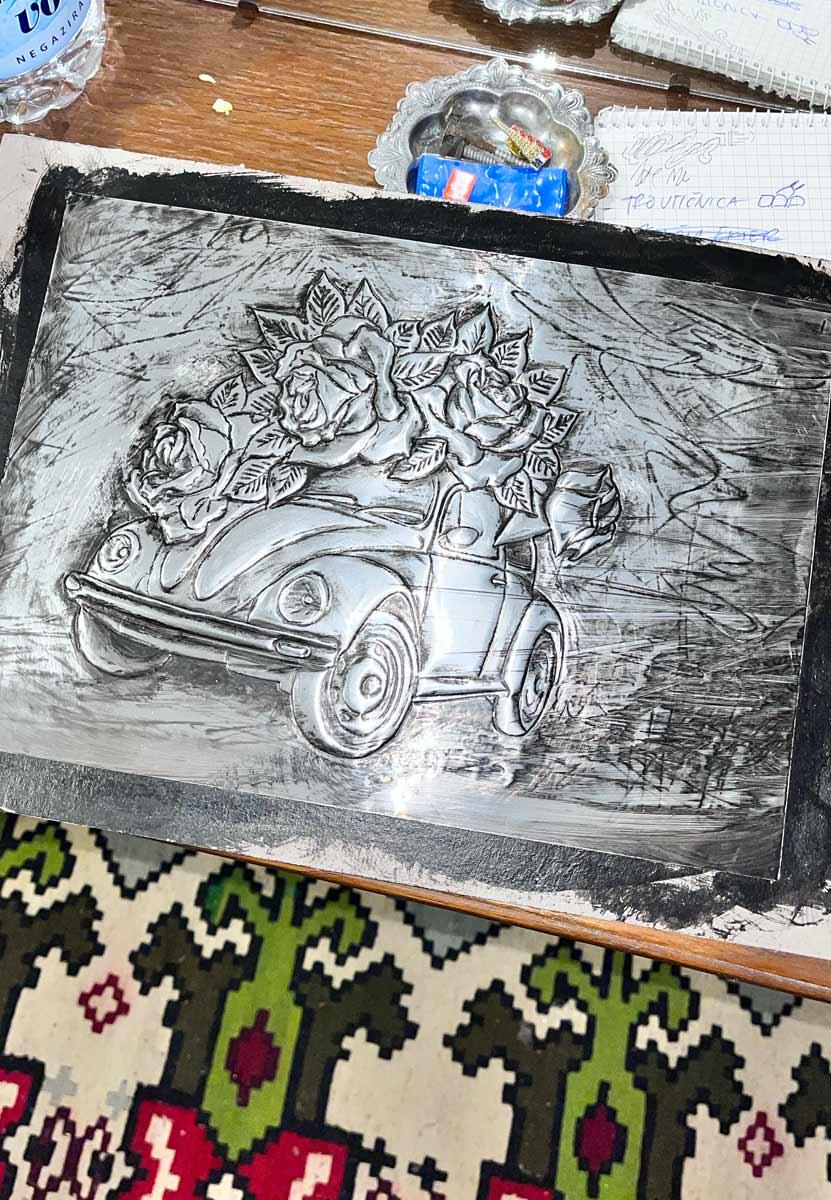
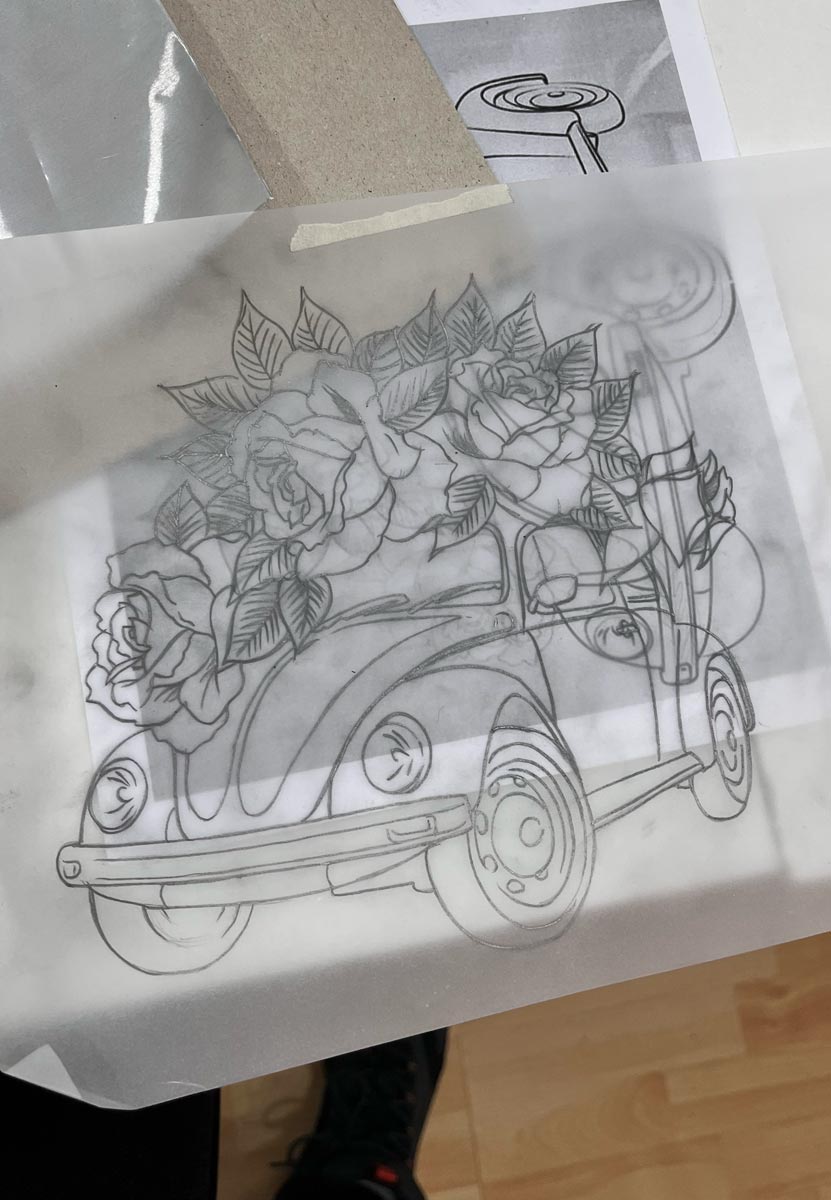
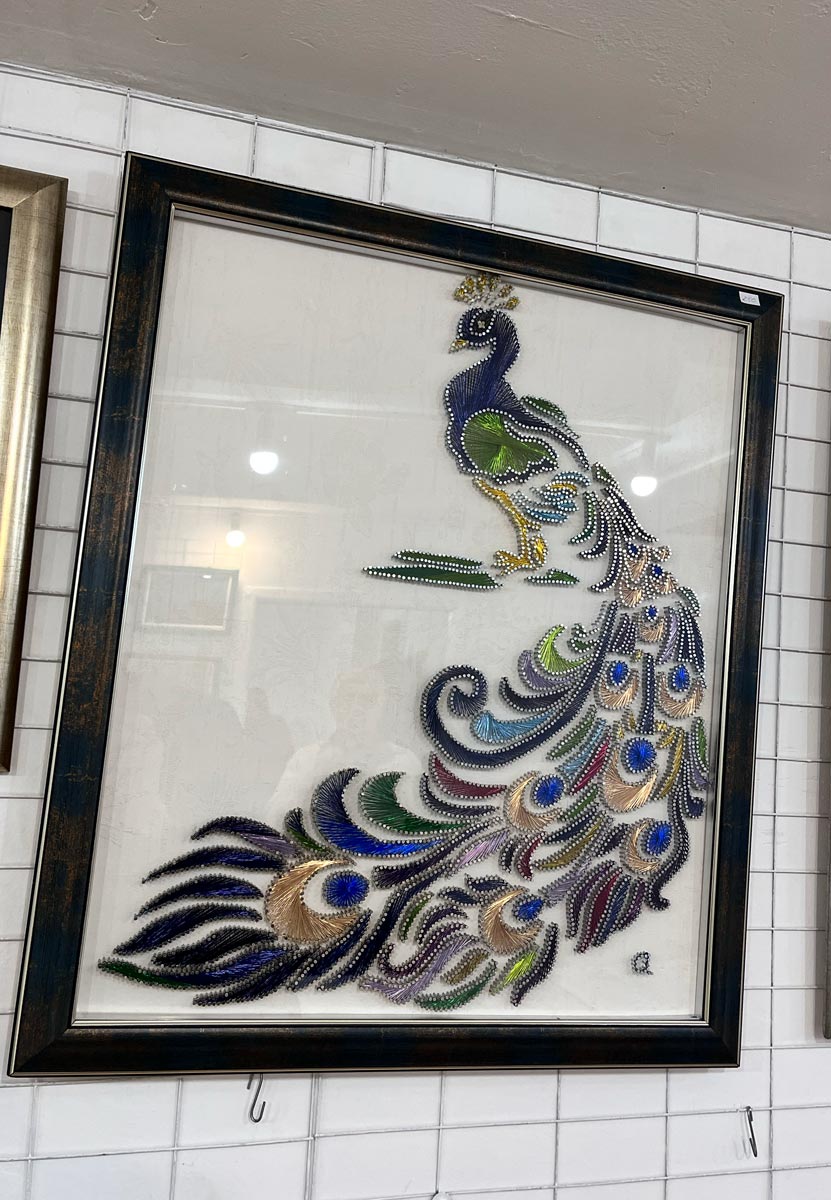
U prilogu koji slijedi, navedeni su „predmet i prvobitno obrazloženje“ teme koji su predstavljeni 6. aprila 2023. U međuvremenu je sadržaj detaljnije razrađen.
„Mladi i avangardni umjetnici su važan element kulturne scene u svakoj metropoli. Nebrojene izložbe, galerije, muzejske postavke, i manifestacije, pravi su magnet za stvaraoce, jer nude dosta mogućnosti za kreativni izraz. Ipak, život u svjetskim metropolama podrazumijeva i „ozbiljnu konkurenciju“, rijetke prilike za samostalna izlaganja, visoke cijene zakupa stambenog i galerijskog prostora, a nerijetko i teške uslove života. Toga su mnogi umjetnici svjesni, ali ipak biraju život u metropoli. Moja želja da upoznam svijet postojala je čini mi se oduvjek.
Život u inostranstvu mi je ispunjenje takve želje donekle olakšao. Studirao sam i radio u različitim metropolama od Amsterdama, Pariza, Berlina i Beča do Njujorka i Meksiko Sitija. Upoznao sam sjaj i bijedu ovih gradova i počeo da razmišljam o selidbi u neko „manje privlačno“ mjesto. Pitao sam se da li bi se tim potezom smanjio kvalitet mog umjetničkog rada? Da li bih tako ostao izolovan od svijeta umjetnosti? Izgubio kontakte? Ipak, donio sam odluku da se preselim u Bijeljinu, što sam i učinio 2016. godine. Pokazalo se da taj životni potez nije omeo moj umjetnički rad. Naprotiv. Oslobođen pritiska koji nose veliki gradovi, osjetio sam novu slobodu i još veći stvaralački impuls.
Odlučio sam da za svoje projekte ubuduće biram manja mjesta. Broj žitelja u malim mjestima se smanjuje, dobrim dijelom i zbog migracija stanovništva u veće gradove. Ono što manja mjesta na prvi pogled čini neprivlačnim, za mene je bilo izuzetno privlačno, a to je broj praznih objekata. Primjera radi, u gradovima istočne Njemačke kao što su Gerlic (Görlitz) i Cajc (Zeitz), ili kao što su Kozarska Dubica, Orašje, Bihać ili Foča, skoro polovina lokala, stovarišta i fabrika stoji neiskorištena.
U svojim master studijama, želio bih istražiti prazne prostore u Sarajevu, u njegovom centru, u predgrađu, ali i u okolnim selima. Ove prostore pokušao bih iskoristiti na nov način: kao mjesta za izložbe ili pop-up hepeninge. U planu je i izrada svojevrsne mape potencijalnih lokacija za kreativni sadržaj. Ukoliko se taj plan uspješno bude realizovao, ova mapa bi mogla biti od koristi i drugim umjetnicima, što bi potpomoglo stvaranje nove klime za umjetničke sadržaje u dužem trajanju. Ovaj projekat bi bio moj pokušaj da kroz mogućnosti koje imam kao dizajner, prikažem napuštene objekte iz drugačijeg i zanimljivijeg ugla, i kao takve ih približim dolazećim generacijama umjetnika, ma odakle da su.“
Sarajevo, 6. april 2023.
Škola kujundžijskog zanata u bistriku
U Sarajevu, kao i u mnogim drugim gradovima na Balkanu, postojala je bogata tradicija kujundžijskog zanata. Sarajevo je kroz svoju istoriju imalo raznovrsne zanatske radionice koje su se bavile izradom metalnih proizvoda. Ovi proizvodi često su bili dio svakodnevnog života ljudi, ali su takođe imali i estetsku vrijednost. Međutim, s vremenom su se promjenile tehnologije i potrebe društva, što je uticalo na smanjenje potražnje za tradicionalnim ručno izrađenim metalnim proizvodima. Iako je taj zanat i dalje prisutan, može biti izazovan održavati ga u savremenom kontekstu. Danas učenje više služi kao hobi nego kao stvarna korist.
Škola kujundžijskog zanata koju sam bohađao početkom 2023. godine, je trajala nešto više od dva mjeseca. Ovo obrazovanje je svakako bilo veoma poučno, ali je bilo usmjereno ka tradiciji i klasičnim motivima. No, bilo bi mi jako zanimljivo ako bih mogao da uključim ovo naučeno zanatsko umjeće u ponudu svoje pop-up prodavnice, kroz savremene i moderne pristupe. Uskoro više o tome.












